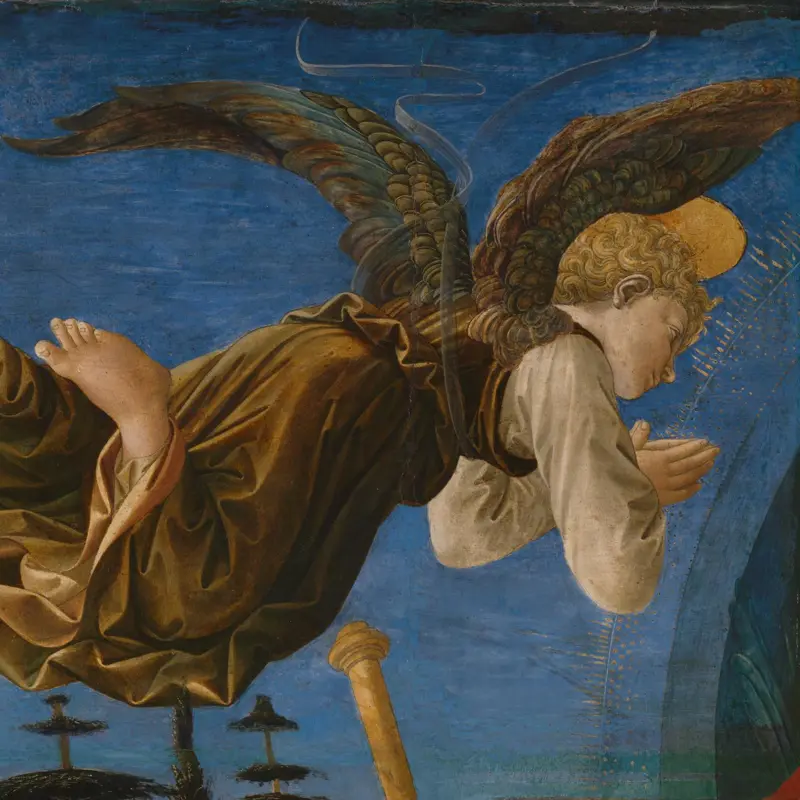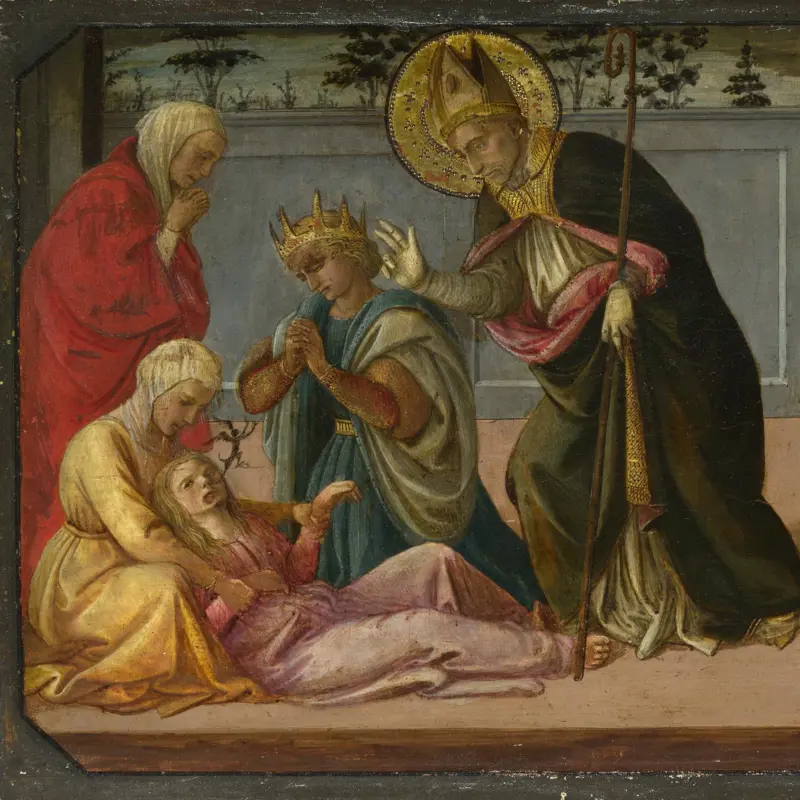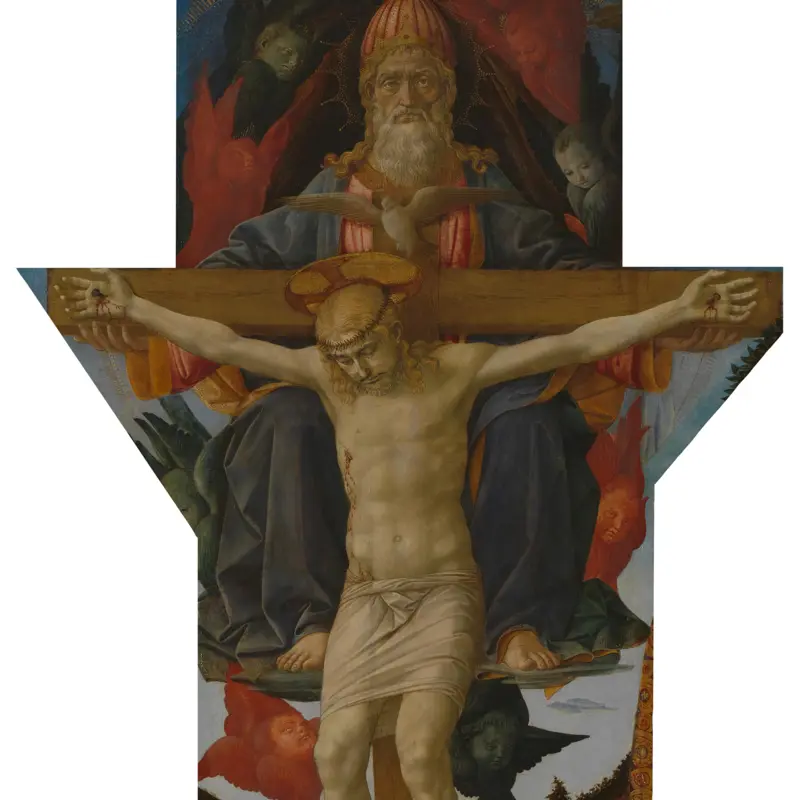Fra Filippo Lippi, 'Seven Saints', about 1450-3
About the work
Overview
Seven saints – all patron saints of members of Florence’s ruling family, the Medici – talk and interact as though Lippi was painting an animated portrait of a group of historical figures.
On the far left is Saint Francis. His meditation on the suffering of Christ was so profound that he developed the wounds of the Crucifixion; here they emit rays of heavenly light. Furthest right is Saint Peter Martyr, the knife in his skull a reminder of how he was killed.
At the centre, Saint John the Baptist is seated between Saints Cosmas and Damian. The little golden boxes on the ledge behind these two are medicine boxes: they were doctors. Next to them are Saint Lawrence, to the left, and Saint Anthony Abbot, to the right. Saint Lawrence was burnt to death on a grill, which became his symbol – it rests against the bench by his side.
Key facts
Details
- Full title
- Seven Saints
- Artist
- Fra Filippo Lippi
- Artist dates
- Born about 1406; died 1469
- Part of the series
- Medici (Overdoor?) Panels
- Date made
- About 1450-3
- Medium and support
- Egg tempera on wood (probably poplar)
- Dimensions
- 68 × 152.8 cm
- Acquisition credit
- Bought, 1861
- Inventory number
- NG667
- Location
- Room 60
- Collection
- Main Collection
- Previous owners
- Frame
- 19th-century English Frame
Provenance
Additional information
Text extracted from the ‘Provenance’ section of the catalogue entry in Dillian Gordon, ‘National Gallery Catalogues: The Fifteenth Century Italian Paintings’, vol. 1, London 2003; for further information, see the full catalogue entry.
Bibliography
-
1951Davies, Martin, National Gallery Catalogues: The Earlier Italian Schools, London 1951
-
1986Davies, Martin, National Gallery Catalogues: The Earlier Italian Schools, revised edn, London 1986
-
2001
C. Baker and T. Henry, The National Gallery: Complete Illustrated Catalogue, London 2001
-
2003Gordon, Dillian, National Gallery Catalogues: The Fifteenth Century Italian Paintings, 1, London 2003
Frame
Crafted from pinewood, the inner moulding was made in England in the nineteenth century, while the outer frame dates to the twentieth century. The panel is arch-shaped and framed in a landscape format, accommodating the curvature with ornate spandrels set in a gilt architectural moulding. These spandrels boast engraved laurel wreaths bound with ribbon against a backdrop of gold punch-tooling.
In the nineteenth century, Lippi’s Seven Saints and its frame were placed within a rosewood glass case for protection. In 1922 both the frame and its accompanying glass case underwent repairs. By 1931 the rosewood case was replaced, and the frame was converted to have a glass door fitted.
About this record
If you know more about this work or have spotted an error, please contact us. Please note that exhibition histories are listed from 2009 onwards. Bibliographies may not be complete; more comprehensive information is available in the National Gallery Library.
Images
About the series: Medici (Overdoor?) Panels

Overview
These panels were made for a member of Florence’s ruling family, the Medici, and once hung in the Palazzo Medici. One panel shows the Annunciation (when the Virgin Mary was told she would conceive a son, Jesus Christ); the other, a gathering of patron saints of the Medici family. The panels are similar in size, scale and viewpoint, suggesting that they were designed as a pair, and were intended to hang where they could be viewed together.
They may have been placed over the doors of Piero de' Medici’s study – its ceiling was decorated with ceramic roundels representing the signs of the zodiac (and, therefore, the months). The Annunciation suits such a setting: its feast was celebrated on 25 March, the first day of the Florentine calendar year. Depicting Medici patron saints may have been a way to demonstrate the protection they offered to the city throughout the year.















